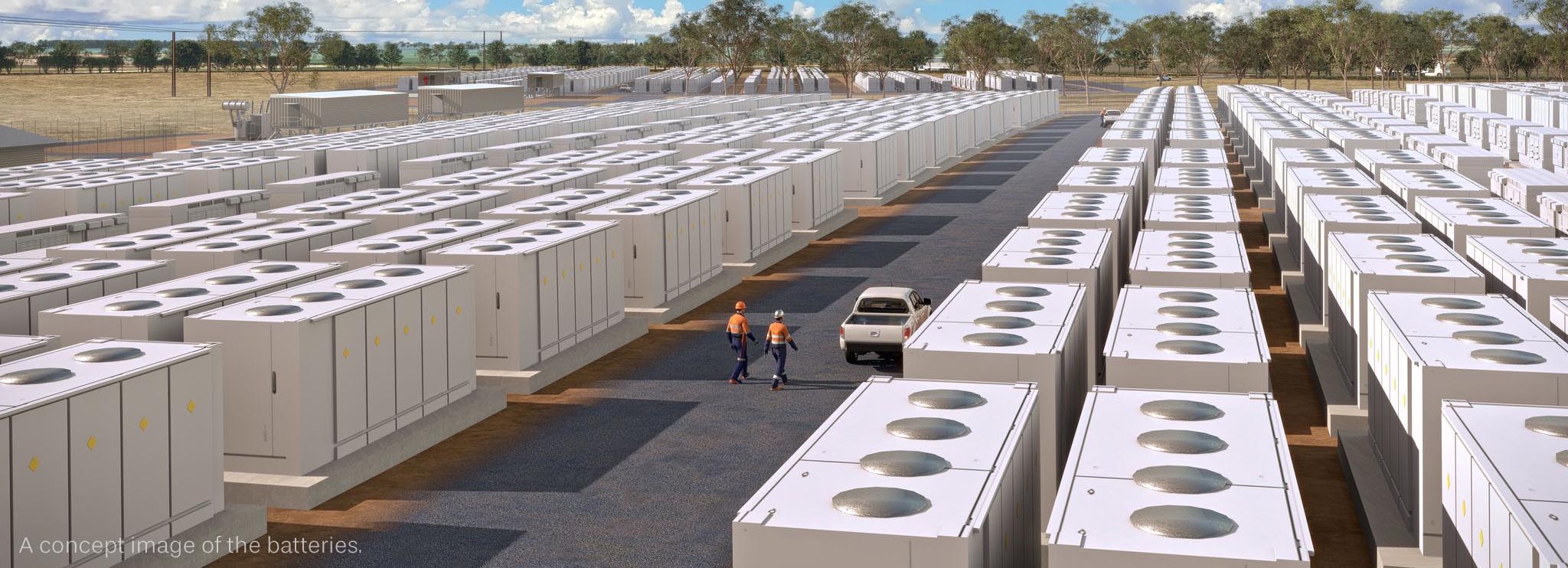The road to making our project operational.
Our battery project at Reeves Plains, located about 50 minutes north of Adelaide, could boost South Australia's electricity storage capacity and help ensure a reliable and consistent supply for the region.
Our goal is to develop a battery to help stabilise South Australia’s power grid by storing excess energy for use during periods of high demand.
We are developing the battery site in two stages. Currently, we are developing Stage 1, which includes a 250 MW battery capable of up to four hours of storage, and then we plan to follow this with a similar battery in Stage 2 for 500 MW of total storage.
The Reeves Plains battery project received a development approval exemption from the South Australian Government on 4 April 2024.
The total 500 MW 4-hour battery project is worth around $1 billion.
Each 250 MW battery could power more than 420,000 South Australian households for up to four hours.
We're undertaking technical and environmental studies to understand the potential impacts from the project, including ecology and vegetation, noise, bushfire, landscape and visual impacts.
There’s a significant amount of work to do before the project is cleared, both by regulatory agencies and by us, to proceed to the construction phase.
We also have development approval for a 300 MW gas-fired power station at the site but have no current plans to make a final investment decision on the gas-fired station.
Timeline
Development
2023–2025
We are currently undertaking environmental, technical and feasibility studies to inform how we design and construct the battery system.
Construction
2025–2027
Construction is scheduled to begin in mid-2025 and will involve activities such as earthworks, placement and installation of electrical equipment and landscaping works.
Operational
2027
Phase 1 of the battery system is scheduled to be operational by early 2027 with an expected lifetime of 20 years.
Outcomes
We want the project to support the uptake of renewable generation in South Australia.
A variety of skills and trades, including civil and earthworks contractors, electricians, and more will be required during construction.
Industries like accommodation, food and beverage, and community services will benefit from increased activity in the area during construction.
Once operational, the battery will require a maintenance team of up to six people. Additional contractors will be needed for routine maintenance of batteries, inverters, and the site.
A community benefits sharing program will be developed in consultation with the community. This will provide support for local initiatives and activities.
Community
Community engagement is critical to the success of the project. We’ve heard common themes raised by the community including bushfire risk, light spill, noise impacts, and visual impacts. As the design of the project progresses these themes will be taken into account. Check out our community updates on the Reeves Plains Battery Project proposal via the links below.

